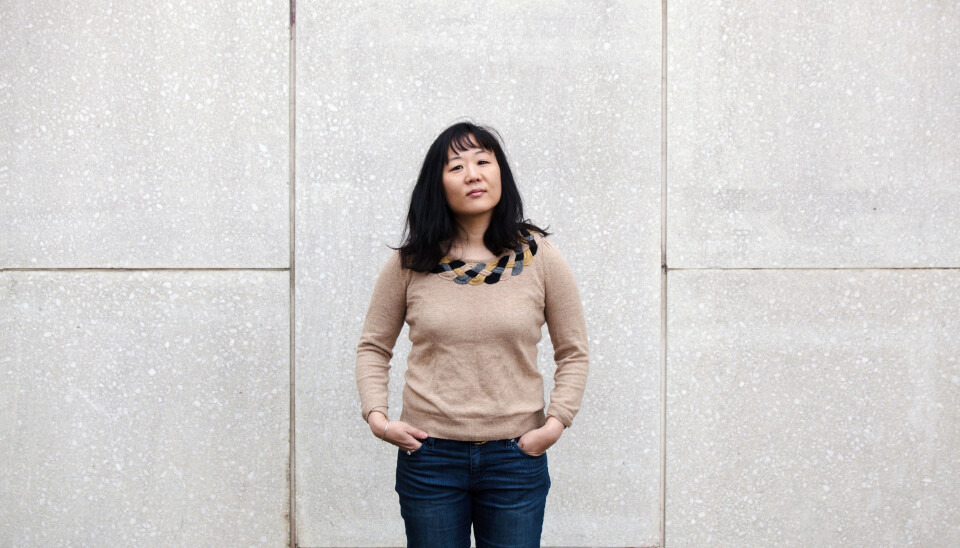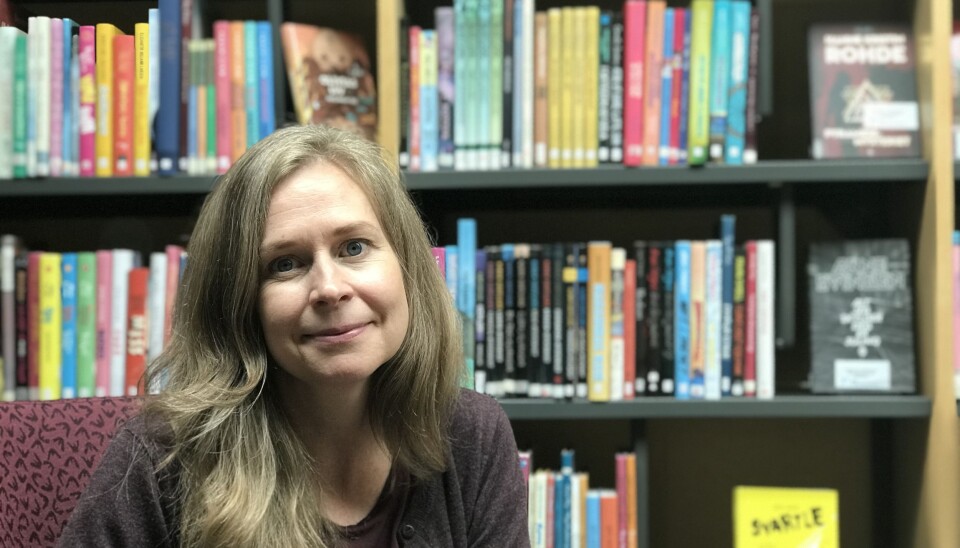
Can a book change your life?
Have you ever read a book that has gripped you so strongly that it affected the way you live or the way you understand yourself? Now the Norwegian health care system is starting to take an interest in literature as part of treatment.
A fictional person who lives only in a book can become as present in a person’s life as a real human being.
Thor Magnus Tangerås believes this to be true.
He recently published the book Literature and Transformation based on his doctoral work. In short, the book is about powerful reading experiences.
Made a huge impression
Tangerås went out into the world and asked: Have you ever had a life-changing encounter with a work of fiction?
“I wanted to know about ordinary readers. I wanted to hear their stories about works of literature that had meant something special to them,” he says.
After posting the question on social media and hanging up flyers in libraries, Tangerås received several responses from people who wanted to tell him about transformative experiences they had had with literature.
“Several of these stories made a huge impression on me. I’ve changed my view on literature, reading and communication,” he says.
Rescued from suicide
Tangerås has had some powerful reading experiences of his own in his life.
But it was a blog post written by British science fiction writer Nicola Griffith that really piqued his curiosity about the topic.
“She wrote about readers who had contacted her with moving stories. One reader revealed that Griffith's books had saved him from committing suicide. Another reader told her that the works of the author had helped her come out of the closet,” says Tangerås. Griffith calls herself a "Queer cripple with a PhD" on her homepage.
“I thought this was remarkable. After all, we live in a time when questions are constantly being asked about the role of literature studies and the humanities in society,” he adds.

New insights into literary studies
Tangerås wondered if such life-changing reading experiences contained some kind of common core. He laid out some criteria he could look for.
“One of them is that the book is still alive in your life, long after you’ve finished reading it,” he says.
He believes that readers' own encounters with literature constitute a dimension that his academic discipline has not addressed much. He is the first researcher in Norway to have studied life-changing reading experiences.
“Maybe we should shift our focus from the theoretical approach in the literary sciences to becoming more concerned with how ordinary people experience reading. In our field, texts are often just objects to be analysed. They’re not seen as something that can help create meaning in a person's life,” says Tangerås.
Nor has the field engaged with so-called "ordinary readers," in his opinion.
Shared reading
As part of the work for his doctorate, he interviewed 20 ordinary readers in depth who shared their powerful reading experiences.
Before the interview he asked them what the book was and read it himself.
Reading the book ahead of the interview was a necessary prerequisite for the conversation, he believes.
First, he asked readers to tell him about their literary experience. Then he invited them to read aloud from specific passages that they remembered especially well from the book.
“I had already read some of the books. And some of them I also had a relationship with. But a number of them I hadn’t read before and probably wouldn’t have chosen to, either. They were genres I didn't really care about,” said Tangerås.
Not all “high literature"
This is where the literary researcher made a discovery. His view of literature broadened.
“When you know that a book has meant a lot to another person, you read it with a kind of reverence,” he says.
The books that the interviewees felt had transformed their lives were highly diverse. The genres and degree of “high literature” varied widely. The books included everything from popular series to classic works. Some were romantic, some were realistic and some were fantastic literature, Tangerås says.
“All the books I read had qualities. What might be a bit too simple for some readers, others find describes where they are in life. This variation may just show that the value of literature lies in the unique meeting between a certain book and reader at a particular time, rather than in the objective qualities of the work,” he says.
He compared all the interviews and also critically considered how likely it was that reading the book had really changed the life of the person in question.
Five of the reader interviews are presented in their entirety in Tangerås’ book.
Reading a book over and over
In one of the narratives, a woman tells about the book My Friend Flicka by Mary O'Hara that she first read as a child. She reread the book over and over throughout her adult life. The story is about realizing a dream, which the woman believes inspired her to realize her own dream of making music and performing. She eventually established herself as a musician.
Another story is about a woman who re-evaluated her lifestyle and moral stance after reading the book Shikasta by Doris Lessing.
Reading to help ourselves
Research has shown, with the help of brain scans, that reading about an experience can stimulate the nervous system of the brain in the same way as having the experience yourself.
Much of the empirical reading research to date has focused on whether reading makes us more empathetic towards other people. Tangerås believes that it may be more fruitful to look at how reading helps readers to accept themselves.
“The therapeutic potential of literature is undeniable. Literature isn’t a treatment in itself, but it can supplement treatment. I don’t think literature can help alleviate symptoms, but it can contribute to improved quality of life and greater psychological well-being,” he says.
Sharing reading experiences
Gradually, more attention is being paid to the use of literature in the context of health.
Tangerås is actively working with a method called shared reading, in which people read literature aloud to one another in groups.
“This is a method that has been researched both quantitatively and qualitatively. It turns out that it yields good therapeutic results,” he says.
Tangerås is now collaborating with librarian Linda Schade Andersen at Ullevål Hospital in Oslo to train librarians and health professionals in using literature in a health context.
The method is already being used in senior housing, prisons and psychiatry.
Reading groups in hospital
Andersen has organized reading groups for patients, relatives and employees at the hospital since 2015.
She believes these groups are a way to open literature up to people, even for folks who are not used to reading.
“You don't even need to be able to read to participate. You can just show up. No preparation is required, unlike in book discussion groups where you have to read the text beforehand. In our groups, the text is presented then and there,” Andersen says.
As a rule, the person who leads the group reads a short story and a poem. Andersen chooses short stories by a diverse range of authors, such as Tarjei Vesaas, Alice Munroe, Cora Sandel and Isaak Bashevis Singer.
What Andersen thinks it is so interesting is how differently we can perceive situations and characters in a short story.
“Having the experience that your own opinion isn’t the only one can expand your horizons. It can give you a sudden moment of insight and a new outlook on the world,” she says.

A different kind of therapy
Synne Sun Løes is one of the participants who has attended a reading leadership course. She is a writer as well as a therapist. Løes works in the Adult Psychiatric Department, Diakonhjemmet Hospital in Oslo.
“Fiction has always been important to me. I’ve gained both comfort and strength from it,” she says.
When she was introduced to the shared reading method by Tangerås, she realized that this could be an alternative way for her to practise therapy.
Another place in us
Literature touches people in places that are also important for mental health disorders,” says Løes.
“A lot of patients who come to us don’t just have isolated anxiety or depression disorders. The diseases are usually closely linked to their entire life. And many of them find it difficult to talk about themselves and their lives in therapy. They can't find the words. Having a text they feel reflected in or can understand others through, is sometimes a less threatening way to approach those difficult feelings,” she says.
Løes is working on getting literature into the Norwegian specialist health care system. She has started a group that is open to all patients at the outpatient clinic.
Many people live satisfying lives without fiction
Novel sales are falling, and men read less fiction than women. Young boys are less interested in this genre than girls.
Some people involved with literature find all of these trends worrisome.
Despite his research documenting that imaginative literature can change lives, literary researcher and book lover Tangerås believes that we should be careful about insisting that everyone should read novels.
“I know a lot of people who live satisfying lives and who could care less about reading fiction. But they may be open to other ways of telling stories. Some get involved with movies, others with music or artwork,” he says.
Tangerås wonders if perhaps living storytelling is what is important in our lives, more than the way it’s communicated.
Classic novels may provide this experience for some people. Others find the same experience through comic books or a movie that moves them. Still others may get goose bumps from a work of art, he says.
Translated by: Ingrid P. Nuse
———

































